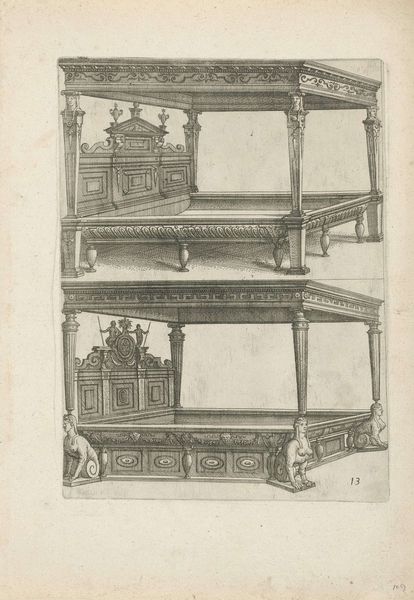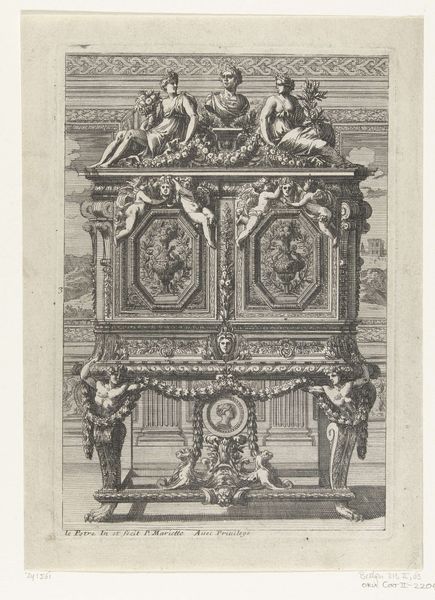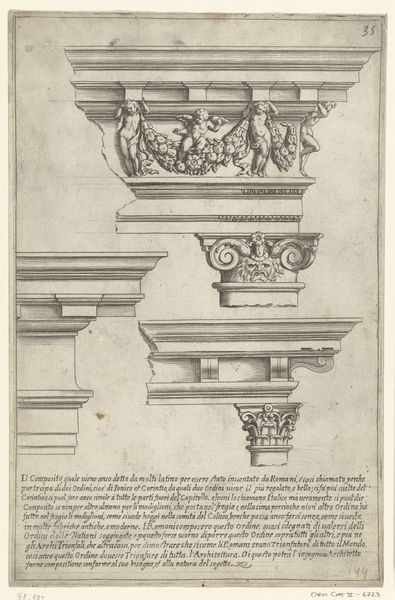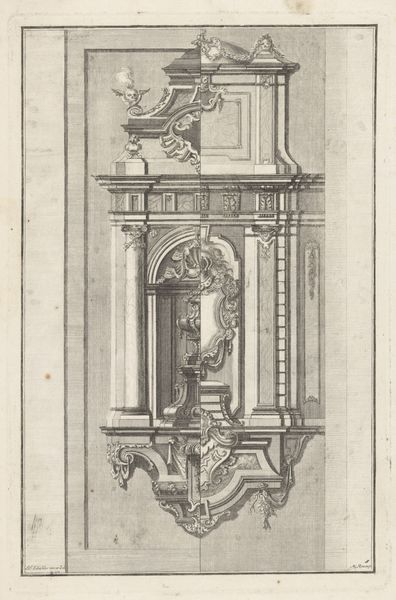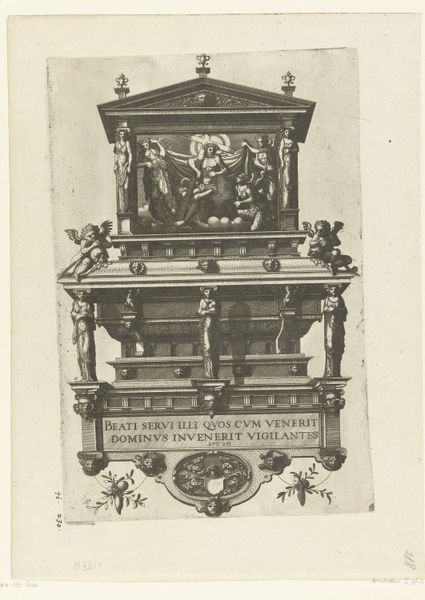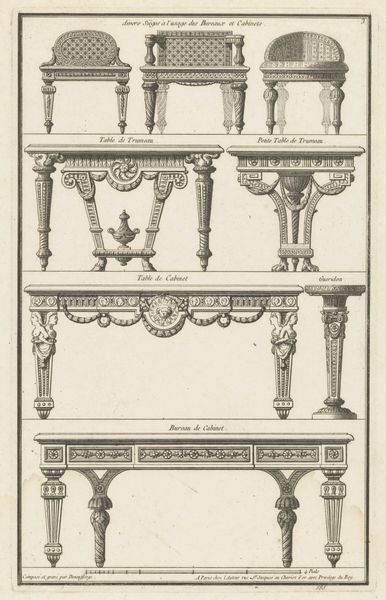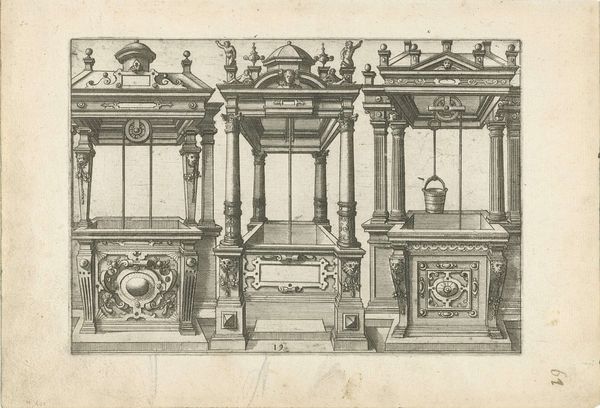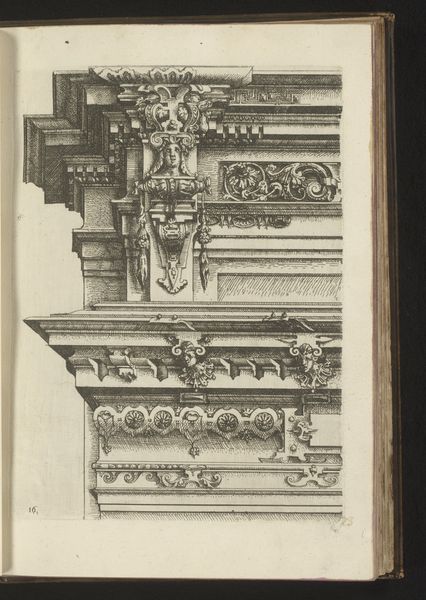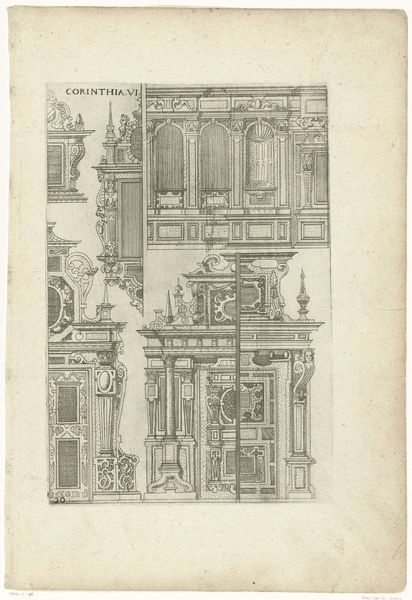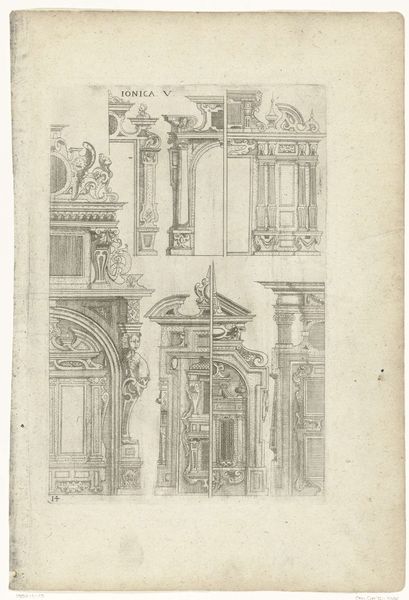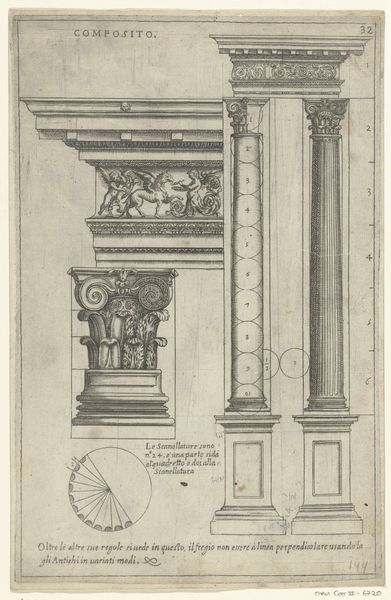
drawing, print, paper, engraving
#
drawing
# print
#
paper
#
form
#
11_renaissance
#
line
#
history-painting
#
northern-renaissance
#
decorative-art
#
engraving
Dimensions: height 253 mm, width 190 mm
Copyright: Rijks Museum: Open Domain
Curator: Looking at this drawing, titled "Acht rekken voor handdoeken, bekroond door frontons," by Pieter van der Borcht I, made around 1583, it's hard not to immediately see it as a product of its time. Editor: My first impression is that the line work is so intricate! There's a real play of geometric forms meeting organic ones. It feels very deliberate, almost architectural in its precision. Curator: Exactly! The social context is key here. These aren’t just random doodles; they are designs intended to showcase wealth and status in the home. We have to consider what it meant to display fine linens in the 16th century. These towel racks are elevated to display platforms of personal pride. Editor: And Pieter's meticulous detail is a testament to his skill. Consider the layering of shapes—the curves of the volutes, the sharp angles of the pediments—all rendered in delicate lines. The artist carefully uses shadows to create three dimensions. Curator: Also, prints and drawings like these had an interesting socio-economic function. They served as pattern books for artisans. They disseminated fashionable design ideas to a wider audience and facilitated a cross-pollination of styles. These "handdoeken" motifs aren't isolated. You would find this design aesthetic replicated elsewhere, shaping cultural visual norms across social classes. Editor: Absolutely, it demonstrates a period deeply invested in form and detail. Looking at the top right towel rack design, I am mesmerized by the central triangle’s strong contrast with the curves. What I wonder, how functional these designs were if ever, relative to their ornamentation! Curator: Function was surely secondary. They reflect the political climate of the period; they demonstrate an outward sign of civic responsibility and a personal moral code via controlled displays of domestic order. So functionality is subsumed beneath ideology. Editor: Seeing van der Borcht’s dedication to each individual rack, though similar, makes one truly appreciate how he mastered lines as building blocks of art! Curator: Precisely. Understanding art like this goes beyond appreciating visual charm; it highlights the critical interplay between cultural trends, artistic production, and the everyday life of people centuries past. Editor: And to truly consider an artisan's creative choices.
Comments
No comments
Be the first to comment and join the conversation on the ultimate creative platform.
